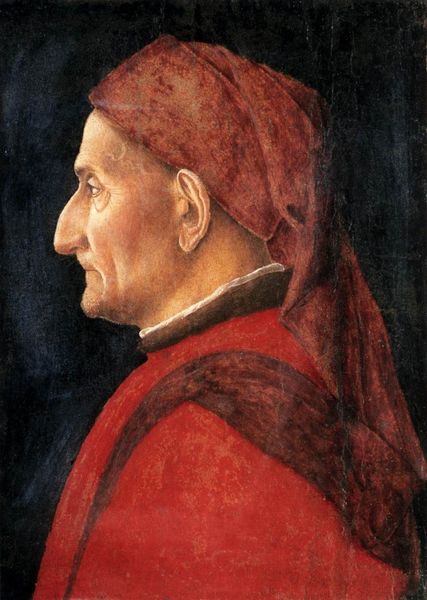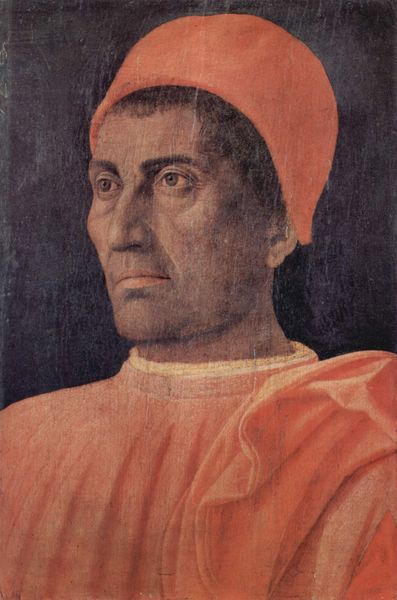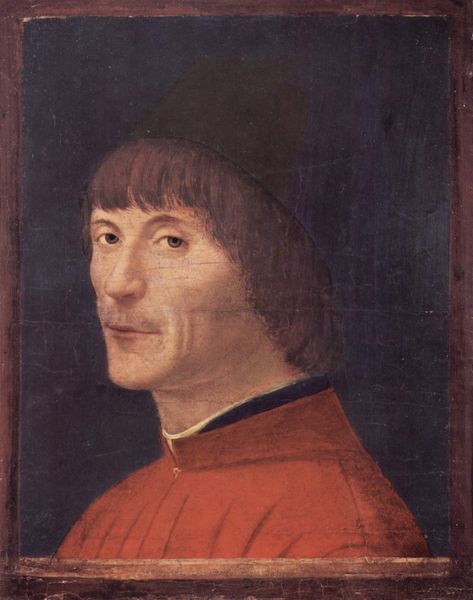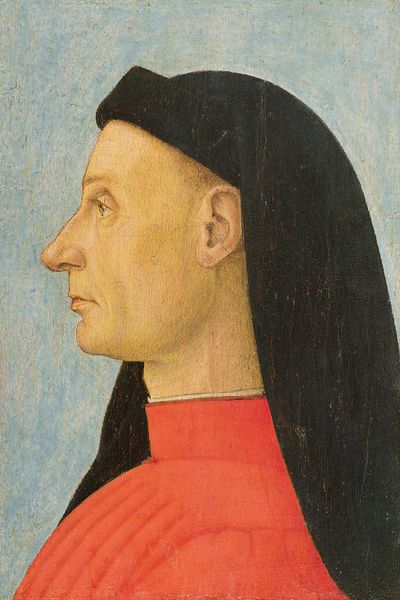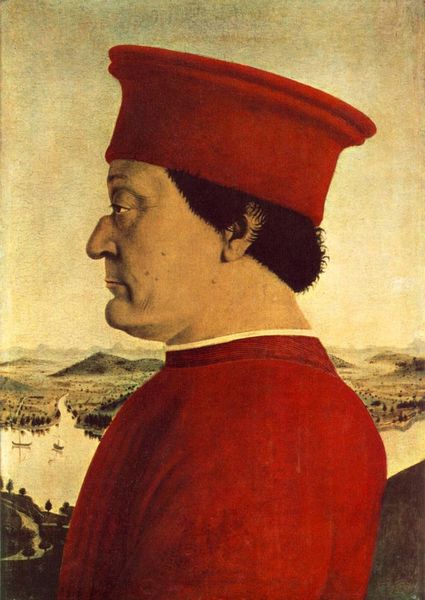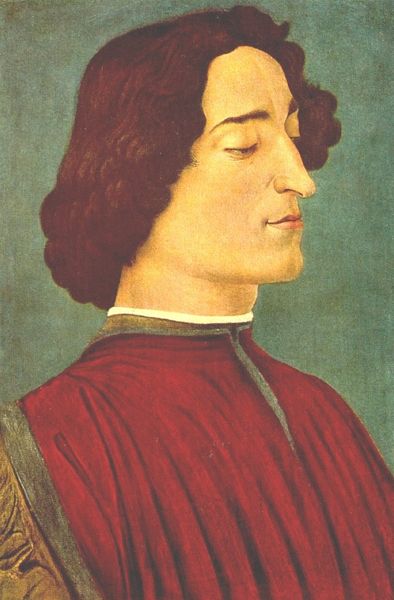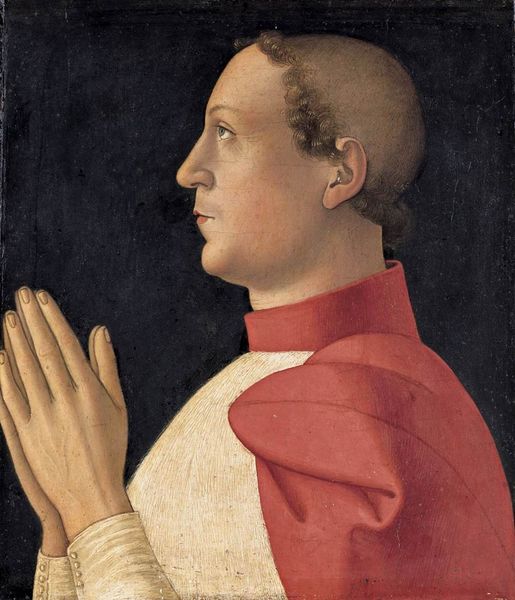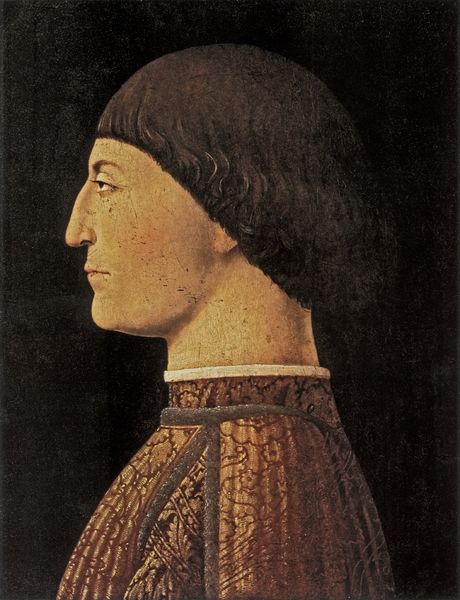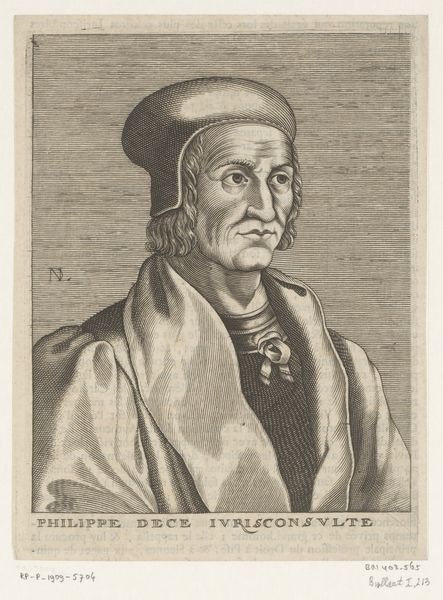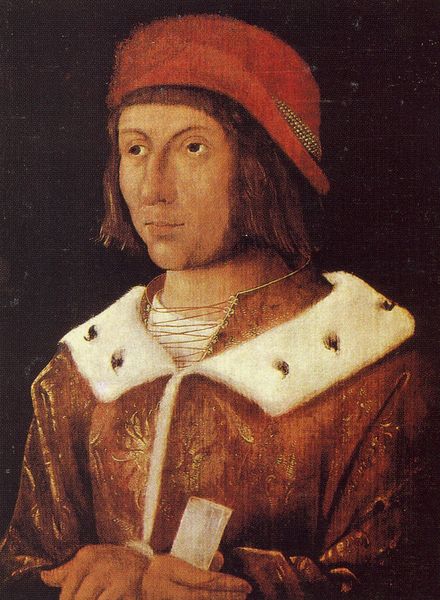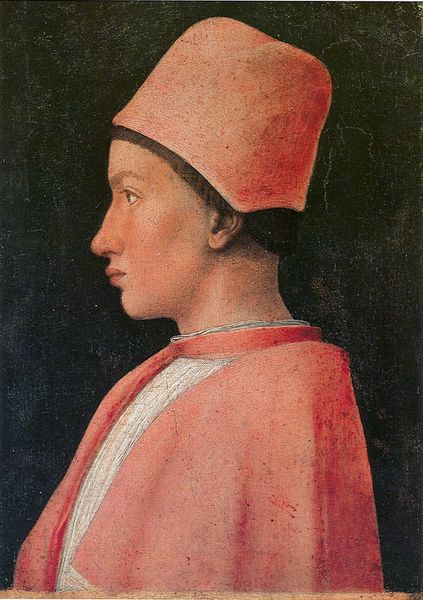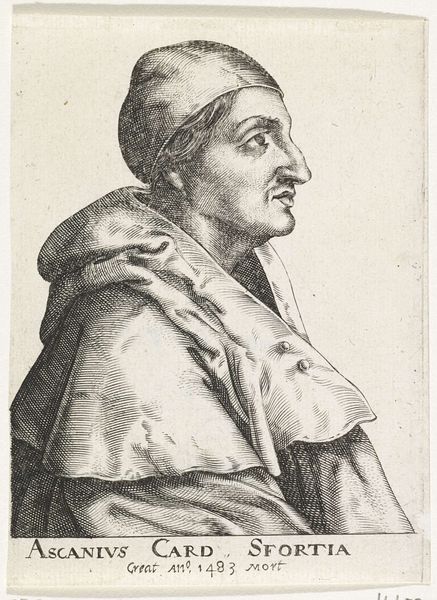
tempera, painting
#
portrait
#
tempera
#
painting
#
figuration
#
history-painting
#
italian-renaissance
#
realism
Dimensions: 54.7 x 47.5 cm
Copyright: Public domain
Curator: Botticelli's "Portrait of Dante," believed to have been painted around 1495, captures the famous poet in tempera with an intense profile view. It is an incredible painting currently residing in a private collection. What’s your take on it? Editor: Well, right off the bat, he looks... determined, or perhaps even a bit burdened. It’s a serious portrait; the weight of thought is palpable. The monochromatic palette amplifies that mood for me. Curator: Absolutely. Notice the meticulous detail in his face and how he used tempera? The sharpness is astounding. Botticelli focused purely on Dante’s persona—all intellect, shrouded by that austere red robe and hat. There are some that note Botticelli may have had a unique understanding of the circles of Hell, that informs his work. Editor: I’m fascinated by the stark contrast of the laurel crown against the somber tones. It signifies honor, victory, but feels almost like a heavy burden here rather than a triumphant symbol. How intentional, do you think, was the choice of such a restricted color scheme to influence this somber mood? Curator: Botticelli, with that uncanny emotional IQ of his, he may have been showing us what it cost Dante to journey through the depths of hell—you never return unchanged from such dark places, do you? That restrained palette keeps it anchored in that realm of thought, experience—his words made manifest on his face. The crimson might signal his passion as a poet but also hint at a more bloody interpretation—his political exile. Editor: That’s a poignant observation—the idea of bearing witness etched onto one's visage. Looking at the painting, my perspective shifts again. It makes you contemplate the translation of suffering into something eternal, you know? A beautiful kind of agony, wouldn't you say? Curator: Yes, truly. There’s a certain, unsettling serenity about this portrait now, knowing all of that. As always, isn’t it great that these old things can be eternally, emotionally available to those of us still here? Editor: Agreed. Makes you wonder what Dante, peering back through time, thinks of our interpretation!
Comments
No comments
Be the first to comment and join the conversation on the ultimate creative platform.
